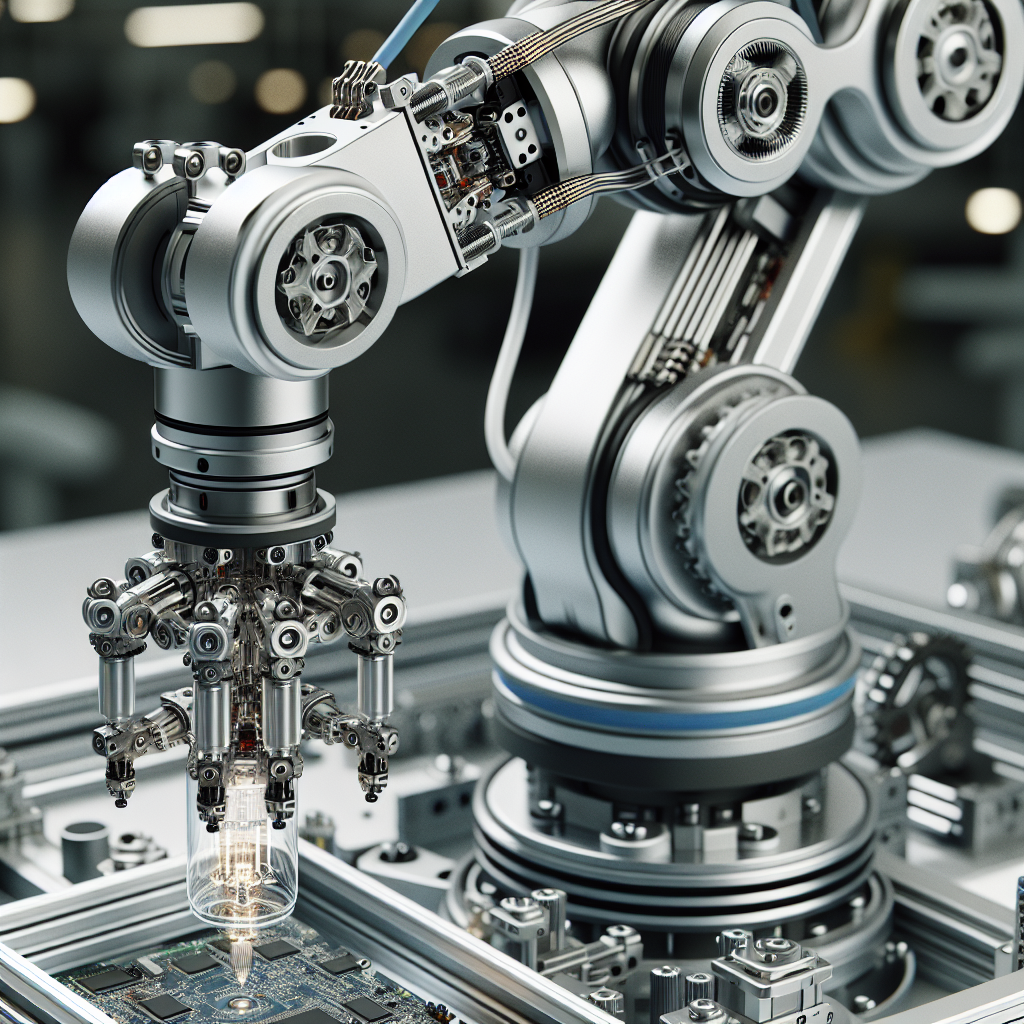Inside the Anatomy of Robots: Key Technical Parts Explained
Explore the essential technical components that make robots function, from sensors to actuators. Learn how these parts work together to create intelligent machines.
November 9, 2025
Overview
Robots are marvels of modern engineering, integrating hardware and software to perform tasks ranging from assembly line work to advanced medical procedures. But what exactly makes up a robot? Whether you're a seasoned roboticist or a curious enthusiast, understanding the core technical components of a robot is key to appreciating their functionality and potential.
In this article, we’ll break down the anatomy of robots by exploring their key parts, how they work, and their role in modern robotics.
---
Technology Breakdown
A robot is much more than just a machine with moving parts—it’s a complex system built to interact with the world around it. Here’s a closer look at its main components:
1. Sensors: The Eyes and Ears of Robots
Sensors are the input devices that allow robots to perceive their environment. They collect data such as light, sound, temperature, distance, and pressure, converting these physical phenomena into digital signals for processing.
-
Types of sensors in robotics:
-
Vision sensors: Cameras and LiDAR sensors help robots "see" and navigate their surroundings. - Proximity sensors: Detect nearby objects to avoid collisions. - Touch sensors: Provide tactile feedback for tasks requiring precision, such as gripping objects. - Force/torque sensors: Measure pressure applied during tasks like assembly or surgery.
Case Study: Boston Dynamics’ robots, like Spot and Atlas, rely on advanced vision sensors and gyroscopes to navigate uneven terrain and perform complex movements.

2. Actuators: Bringing Robots to Life
Actuators are the "muscles" of a robot, responsible for executing movements. These components convert electrical energy into mechanical motion.
-
Types of actuators:
-
Electric motors: Commonly used for precision tasks due to their speed and control. - Hydraulic actuators: Provide high power for heavy-duty applications like construction robotics. - Pneumatic actuators: Ideal for lightweight, repetitive tasks, such as robotic arms in manufacturing.
Modern robots often combine these actuators for optimal performance. For instance, the Tesla Optimus robot uses a mix of actuators to achieve human-like dexterity and strength.

3. Control Systems: The Robot’s Brain
The control system is the decision-making unit of the robot. It processes data from the sensors and sends commands to the actuators to perform specific tasks.
-
Key components of control systems:
-
Microcontrollers and microprocessors: Handle real-time decision-making and computations. - AI and machine learning algorithms: Enable robots to adapt to new tasks or environments. - Feedback loops: Ensure precise and accurate movements by constantly adjusting based on sensor input.
Real-World Example: Self-driving cars utilize control systems powered by AI to process road data and make split-second decisions, ensuring safety and efficiency.
4. Power Supply: Energizing the Robot
A robot needs a reliable power source to function. The choice of power supply depends on the robot's size, purpose, and operational environment.
-
Common power sources:
-
Batteries: Lithium-ion batteries are popular due to their high energy density. - Solar panels: Used in outdoor and space robots for sustainable power. - Hydraulic power systems: Common in industrial and heavy-duty robots.
Challenge: Balancing power efficiency with performance remains a key focus area for robotics engineers, especially as robots become more autonomous.
5. End Effectors: The Hands of Robots
End effectors are the tools or attachments at the end of a robotic arm. They enable robots to interact with objects in their environment.
-
Examples of end effectors:
-
Grippers: For picking and placing objects. - Welders: Used in automotive and manufacturing industries. - Surgical tools: Found in medical robots like the da Vinci Surgical System.
Innovation Highlight: Soft robotic grippers, made from flexible materials, are now being used to handle fragile items like fruits or medical instruments.

---
Industry Impact
The technical components of robots have far-reaching implications across industries:
-
Manufacturing: Robots equipped with advanced sensors and actuators enhance efficiency and precision in assembly lines, reducing errors and production costs.
-
Healthcare: Surgical robots like the da Vinci system rely on precise actuators and real-time sensor feedback to perform minimally invasive surgeries.
-
Logistics: Autonomous robots powered by AI and advanced control systems optimize supply chain operations, such as sorting and delivering packages.
-
Space Exploration: NASA's robotic arms, equipped with sophisticated sensors and actuators, are critical for assembling structures in space and exploring extraterrestrial terrain.
As technology advances, robots are becoming more versatile, adaptive, and capable of performing tasks once thought impossible.
---
Visual Highlights
---
Conclusion
Robots are intricate systems that combine multiple technical components to perform a wide array of tasks. From the sensors that perceive the environment to the actuators that bring motion, every part plays a crucial role in making robots functional and intelligent. As technology continues to evolve, these components will become even more sophisticated, driving the next wave of innovation in robotics.
Whether you’re building your own robot or simply fascinated by the technology, understanding its anatomy is the first step toward appreciating its endless possibilities.
---
Related Topics
-
Robotics engineering
-
Actuators and sensors
-
AI in robotics
Related Articles
Inside the Anatomy of Humanoid Robots: Actuators, Sensors, and More
Discover the key components that bring humanoid robots to life, including actuators, sensors, and control systems, and learn how they mimic human abilities.
Read MoreWhat's New in Humanoid Robotics - November 6-13, 2025
This week's top updates in humanoid robotics
Read MoreEnsuring Safety and Governance for Humanoid Robots: A Guide to a Safer Future
As humanoid robots enter our daily lives, ensuring their safety and governance becomes critical. Learn about the challenges, solutions, and ethical frameworks shaping the future.
Read MoreReady to Explore Humanoid Robots?
Check out our robot showcase to see detailed specs, capabilities, and videos
Explore Robots